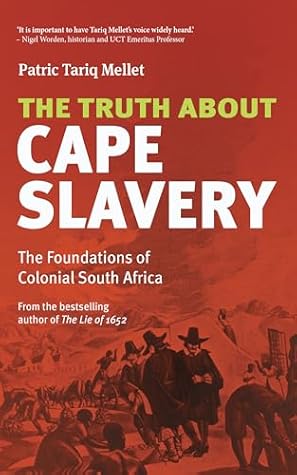Kindle Notes & Highlights
Read between
December 26, 2024 - June 24, 2025
per cent
per cent.
per...
This highlight has been truncated due to consecutive passage length restrictions.
1885, when European leaders met at the Berlin Conference to decide on borders
The only substantially important thing about the early experiment with a stratified free European labour class, which had three strata, was that the lowest level married non-white enslaved and Khoe in substantial numbers. Some of their offspring assimilated into European society and others became part of the emergent community who would be labelled formally as ‘Coloured’ in 1911. Today, many of the latter increasingly call themselves Camissa Africans or are reasserting their Khoe heritage.
The inboekstelsel system was used to control young San captives during the genocide committed by the General Commando.
The very first enslaved person at the Cape – Abraham van Batavia – actually arrived as a stowaway, in 1653. He was an escaped enslaved man from the Dutch stronghold of Batavia (Jakarta) in Java, which
At the beginning of 1657 there were 11 enslaved people at the Cape.
In April 1657,107 there were a total of 145 non-Indigenous people in the colony, broken down as 100 VOC employees, 10 Free Burghers, 6 convicts, 11 enslaved, 6 European women and 12 children.
Up to the 1860s, the first-generation enslaved brought to the Cape totalled 110 000, of whom 80 953 survived the journey,
For the Atlantic slave trade, US historians provide an estimate figure, backed by years of solid collaborative research, showing that 12.5 million115 enslaved people were trafficked and landed in the New World from West Africa, by Spain, Portugal, Great Britain, the Netherlands, USA, France, Denmark and the Baltic states.
there are elements of internal slavery systems in Africa and complicity within some African elite societies who served the Arab and European trade in Africans by capturing and selling fellow Africans,
The Muslim Malays and Javanese ethnic groups of Malaysia and Java, in the main, were slave owners and slave traders rather than the victims of slavery.
By the 17th century the elites were Muslim and the enslaved were non-Muslim. The enslaved people at the Cape were not brought there as Muslims but rather became Muslim at the Cape as a result of missionary work by prominent Muslims exiled to the Cape by the Dutch.
the Malays were slave owners and traders who enslaved the Indigenous Orang Asli people, whom they called ‘Sakai’ (slaves) and ‘Kafir’.
and thus the Orang Asli were the people who were hunted down, captured and enslaved as Sakai for local use and for export.
The ethnic origins of those called ‘Cape Malay’ are much more diverse than is popularly believed.
The Cape Malay culture also has strong Indian, Bengali and Arakan elements as well as African-Malagasy elements. The last are a strong mix of Bantu-speaking sub-Saharan African, Arab and Sulawesi Indonesian influence.
Davids provides reasons for his preferred employment of Cape Muslim (rather than Malay):
There is no real ethnic difference between Muslims and non-Muslims at the Cape.
The overall number of enslaved destined for the Cape over the period 1652–1870 was between 110 000 and 120 000, with an attrition rate of more than 20 per cent who died at sea144 on the long difficult journey.
Shell notes that between 1795 and 1808, when the Cape was dominated by British rule, there were more imports of enslaved persons than at any other time.
it was forbidden175 by Dutch law to enslave Javanese people,
To pacify196 the enslaved, including the children, Jan van Riebeeck ordered that daily rations of alcohol and tobacco be given to them,
Van Riebeeck effectively was the initiator of the ‘dop’ system (tot system) used as a reward and control measure by farmers with the enslaved and, later, farmworkers.
The earliest of these were Angolans enslaved at the Cape, who were also the first to be called ‘Caffers’ before this derogatory term was later used for other Indigenous Africans, such as the Khoe and later the amaXhosa.
All these interpretations have resonance for a term that became used not only at the Cape but also in East Africa, India, Ceylon, Malaysia, Indonesia and elsewhere.
The derogatory use of ‘Kaffirs’ in reference to the amaXhosa in particular, and black people in general, arose as a divide-and-rule linguistic device by the British in the 19th century.
A demarcated reservation area created after ethnically cleansing the greater part of the Eastern Cape for British settlers was called Kaffraria, and its Xhosa population were called Kaffirs by the British.


